Head Lice facts
January 29, 2018
Lesser-Known Facts about Lice Parents Should Know
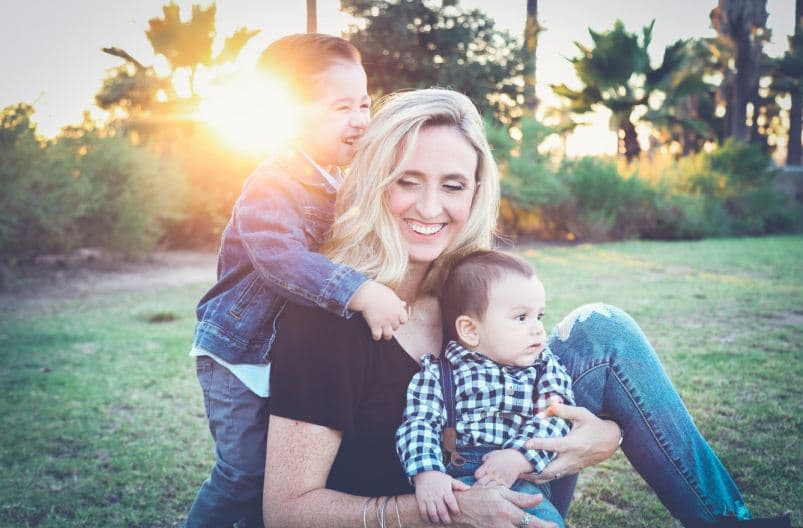
Lesser-Known Facts about Lice Parents Should Know
January 29, 2018
There’s nothing more troublesome and irritating than your child coming home with a note in their hand from their teachers, informing you to not send them back to school, until each and every nit and louse has been removed.
The dreaded head lice are back. It sounds like a B-rated horror movie that was probably inspired by Reefer Madness. But it’s worse than that (yes, something worse than Reefer Madness) because it’s a living nightmare!
And no matter how many times you do the “awkward and embarrassing” walk to the pharmacy, it seems like these bloodthirsty critters are here to stay.
So, what do you do? Do you shave your child’s hair? After all the time and effort you put in to make it grow long and thick, is that even an option?
While it can be tempting, the first step to take is to relax, calm down, and educate yourself about head lice.
Here’s What You Should Know…
While it may seem like the problem you’re facing is something that is unique (cue the “why me?” thoughts), head lice are actually a common problem. More than 12 million people in the U.S. contract head lice every year.
But the problem isn’t related to something as simple as “poor hygiene” or something similar. Lice do not thrive in conditions that promote uncleanliness. They thrive in human hair and feed on human blood.
If you’re a parent, you’ve probably heard from your peers that lack of hygiene and poor living conditions cause head lice. The truth is, head lice lurk in the corners of school playgrounds and the reason why children are the most vulnerable is because they are active beings that love to play in the outdoors.
While head lice cannot fly (surprise, surprise!) they can jump high. So, when you’re sitting next to someone who has been infected or taking a selfie (gasp!) your chances of contracting lice are pretty high.
And Here’s What You Can Do:
Every problem has a solution. This includes head lice. While they are common, most parents are unaware of how to deal with them because they don’t have enough information about head lice.
One of the problems is that most parents rely on chemical-based products to get the job done. Not only are these harmful, they are known to contain several harmful pesticides, such as:
- Lindane
- Carylderm/Carbaryl
- Ovide/Malathion
- Stromectal
Lindane has been classified as carcinogenic, while ovide, carbaryl, and stromectal have been known to hospitalize children. The worst part is, some of these products advise parents to keep the products soaked in their child’s hair for 8 hours (yikes!)
Unfortunately, you’re probably already aware of the magic of home remedies (mayo and Listerine, anyone?)
They leave your child’s hair brittle and some even take days to wash off! It looks like you won’t be winning this battle…or will you?
Sure, lice are tough to handle. But that’s nothing for Lice Busters USA. Our lice specialists are experts when it comes to taking care of these pesky critters and saving your child’s hair!
We also offer in-home treatments and home inspections if you want private treatments.
Feel free to call us at (800) 405-8201 to book an appointment or feel free to visit our Orlando treatment center!
January 28, 2018
Does Having Lice Mean You Have Poor Hygiene?

Does Having Lice Mean You Have Poor Hygiene?
January 28, 2018
There’s a saying that first impressions are last impressions. We judge people based on how they present themselves when we first meet them. The way they talk, the way they dress, their mannerisms, their outlook on life; all of these are important.
By the end of the meeting, we’re either left impressed, or with a bitter aftertaste in our mouth.
Have you ever met someone who left a powerful impression on you? Whether it was negative or positive, you probably remembered them the moment you read this.
That’s how first impressions work. And when you’re dealing with something like head lice, they can leave people with numerous questions like, “Does he or she even bathe?”
This is a good question. If you’ve ever encountered someone with head lice, or struggled with the problem before, you probably remember this question popping up from time to time.
But is it really true? Are lice the result of poor hygiene? Let’s take a look and find out:
Lice Only Care About Human Blood
Lice are similar to bed bugs—they only care about feeding on human blood. Whether the scalp is dirty or clean, as long as they can get access to your blood, lice remain neutral.
There’s no evidence that suggests that head lice need a certain type of environment in order to survive. There is a certain temperature that helps them thrive and lay eggs, though.
The average human’s body temperature is 98.6◦F (37◦C) and the average louse needs 18◦C to survive. Nits need humid temperatures to hatch.
This is because they get the warmth they need in order to fully develop inside the shells. Humidity often leads to sweating, which is probably why there are misconceptions about personal hygiene and head lice.
What to do About the Problem
The first thing you should do is keep in mind that head lice are a common problem, with 6 to 12 million people in the U.S. contracting lice every year. But if you’ve tried everything in the book and still can’t get rid of the pesky critters, the devil is in the details.
Most individuals don’t know what to do in the situation (which is understandable). They often go to the nearest department store and buy all the anti-lice products and combs they can find.
But here’s the catch: the products that are supposed to help are the ones that do the most damage.
Confused? Let us explain.
Most anti-lice products—specifically anti-lice shampoos—contain harmful chemicals like lindane and ovide. Research conducted by the Environment Protection Agency shows that lindane has been classified as carcinogenic. And yet, it’s still used in lice products.
The worst part is that these products are aimed at desperate and unaware parents who don’t know anything about its consequences.
Ovide is also an insect repellant. But it’s just as strong as lindane. Most products that contain ovide advice that it is applied to the roots of your hair and left there for 8 hours!
Home remedies are also similar. Even though they’re not laden with lindane and ovide, they do have harmful ingredients that can damage your hair. Some of these include tea tree oil, Listerine, mouthwash, and baking soda that can make your hair dry and brittle if directly applied to the scalp.
Why Lice Treatment Centers Are the Solution
You’re probably wondering what a ‘lice treatment center’ is. Lice specialists are experts in removing nits and lice from each strand of hair. Using pesticide free products and quality combs (that don’t damage hair follicles), they prioritize your health and take care of the problem naturally.
Lice Busters USA is one such service. Our clinic offers natural head lice treatments in Orlando. Our experts have adequate training and immense experience in removing head lice in you and your child’s hair. Using natural products, we understand the importance of keeping your child safe during the process.
From in-home treatments to home inspections, we have everything under one roof.
Feel free to call us at (800) 405-8201 to book an appointment or feel free to visit our Orlando treatment center!
January 27, 2018
Why Nit-Picking is the Only Way to Treat Lice
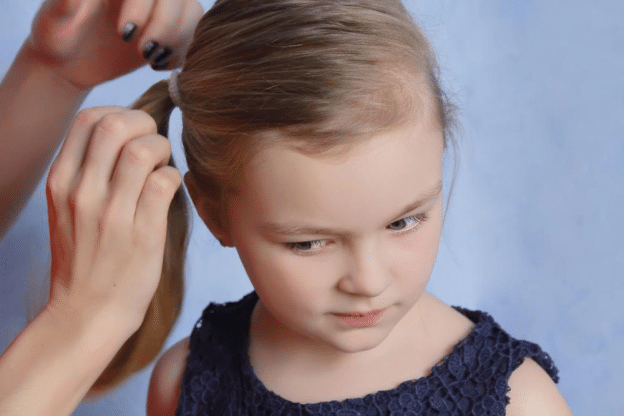
Why Nit-Picking is the Only Way to Treat Lice
January 27, 2018
For such miniscule creatures, head lice can serve to wreak a whole lot of havoc in our lives. While they certainly don’t present any risk of disease or harm, there is a natural reaction of disgust to the idea of having parasites living in one’s hair. More
January 27, 2018
Head Lice in School – What Parents Should Know

Head Lice in School – What Parents Should Know
January 27, 2018
A call from the school nurse can be mind-numbing, but when the call is about a lice outbreak, the aftermath can be chaotic.
Dear parents, don’t panic. Let’s deal with the situation strategically. We answer some questions about head lice infestation.
Why My Kid?
Well, children are the most common carriers of lice as they are exposed to frequent head-to head contact. 6–12 million lice infestation cases are reported annually in the U.S. So, the probability of lice infestation is very high.
I Keep My Kids Clean. Why Did They Get Lice?
Lice are not a causal effect of poor hygiene. Lice are transmitted through contact; your kid might have caught them at school, play ground or at day care.
How To Inspect Hair For Lice?
An adult louse is size of a sesame seed can be spotted with naked eye, although nits are harder to find and remove because of their sheer size.
The best place to look for lice is behind the ear and at the nape.
Is Head Lice Harmful? What Are The Symptoms?
Head lice are a menace but have no harmful impact on the host. They carry no diseases. That being said, they do cause, itching, irritable scalp, sores, and discomfort in sleep.
How to get rid of lice?
There are three treatment methods that you can approach;
- Home remedies
- Chemical solutions
- Natural nit-picking
Home remedies may have side effects and take longer time to show results.
Moreover, the use of chemical products without prescription causes severe allergic reactions. On the other hand, natural nit picking is the safest side-effect-free approach for lice removal.
I don’t know how to Nit-Pick
Well, the process is fairly simple and can be mastered with practice. But if you want your child to rejoin school ASAP, you should approach a lice removal clinic. If you’re living in Orlando, then Lice Busters USA is the best place for you. They provide wide range of lice removal services at affordable prices.
What To Do If You Are A Busy Parent?
There are special services created for parents who can’t make it to clinics. You can also sign up for an in-home lice treatment. All you have to do is book an appointment by calling 800-4035423.
Should I Get My Entire Family Treated?
You may be sharing toiletries, combs, head gears, beds. Because of this, it is highly possible that the infestation has spread to other members of the family. Inspect other individuals for lice symptoms.
Will They Come Back?
Lice re-infestation can happen if they are not entirely eliminated from the surrounding. This calls for a thorough cleaning of house and belonging. If you find this cleaning process difficult, call a lice removal clinic for a complete lice inspection and cleaning.
Moreover, inform those in close acquaintance of your child to also get treated for lice.
When To Rejoin School?
When all the lice are removed, your kid can rejoin the school. If you go to Lice Busters they can provide your child with a lice-free certificate. Your kid can rejoin school after submitting the certificate.
How Can I Avoid Them?
Educate your kid to avoid sharing head accessories with other kids at school and if they suspect someone has lice, they should avoid direct contact.
Lice are very likely to occur in school-going kids, but if you monitor them closely, an infestation can be avoided.
January 26, 2018
What Do Nits Look Like?
What Do Nits Look Like?
January 26, 2018
Can’t stop scratching your head? From dandruff to lice, several factors can lead to an itchy scalp. But, what if nits are the cause of your irritation and pain?
Read on to learn the difference between lice and nits:
The cycle of lice
Lice eggs are called nits. Female lice can lay at least 10 nits every day. The nits are laid mostly near the hair follicles where they may take up to one week to hatch. The shells of the hatched eggs (called nymphs), however, remain glued to a person’s hair shafts. As the hair grows, the nymphs then start moving away from the scalp. It takes 9 to 12 days for a nymph to turn into an adult louse.
Lice vs. nits: What’s the difference?
Just like eggs, nits have an oval shape. They are as small as a thread knot. Nits are light in color. They can be tan brown, yellow or white and are found on hair shafts.
Louse, on the other hand, is larger than a nit. It’s as big as a sesame seed. A louse has six legs and crawls along strands of hair. The common perception that lice can fly or jump is incorrect. The color of a louse may vary, but it’s mostly brown or gray.
Lice can live up to a month in the head.
How to identify nits
Nits are difficult to find in hair due to their small size. However, if you run your nails down the hair, you can feel bumps.
Also, lice and nits can sometimes crawl near a person’s neckline or ears. Be mindful of these areas when you’re looking for nits and lice in someone’s head.
To increase your chances of catching nits or lice, you need a strong light and a magnifying glass. The closer you look for them in your child’s hair, the greater the likelihood you will find them.
Another useful tip is to use hair clips on a girl’s hair. This will make it easier to look for nits as you can go through each section in order. Last but not least, natural light works better than indoor lights. If possible, check your child’s hair outside under natural light.
If you find nits or lice in child’s hair, do not panic. Get in touch with us for professional lice removal in Hollywood, FL. At Lice Busters, we use effective, safe and natural solutions for removing lice and nits in no time.
Schedule an appointment now.
January 25, 2018
Can Lice Cause Hair To Fall Out?
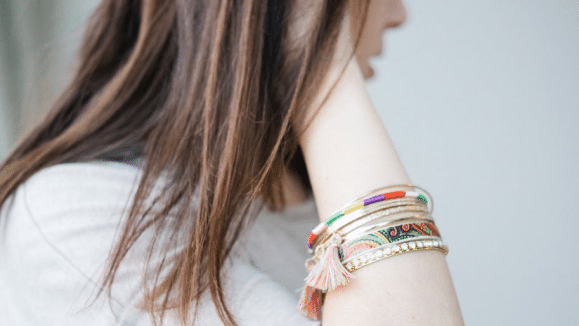
Can Lice Cause Hair To Fall Out?
January 25, 2018
The tiny, unpleasant critters we call “lice” bring a plethora of problems. There’s that insatiable itch. Then you have got your missed school and work days, having to explain to people around you the reason for your incessant scratching, the troubled sleep, and more. More
January 24, 2018
Some Fun Facts about Head Lice
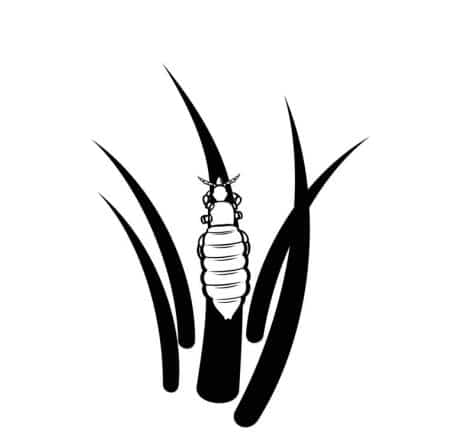
Some Fun Facts about Head Lice
January 24, 2018
The relationship between men and lice is quite unique. On one hand, there are humans – who have (unsuccessfully) tried to get rid of them for centuries. On the other hand, there are lice – who have stayed true to us. In fact, they are so loyal they cannot survive on any other species on the entire planet. How’s that for loyalty!
We all know what head lice are and how they make us feel. Let’s dig a bit deeper and discuss some fun facts about them. Read on:
- Head lice have been with us since our evolution. The first evidence of head lice was found when researchers discovered head lice on Egyptian mummies. Yes, they have been with us for a long time.
- When a head louse lays a nit, it takes around 7 to 10 days for it to hatch. Then, it requires another 7 to 10 days for it to become a fully-grown louse. You surely don’t want that to happen!
- Lice have been known to show a gender bias. For some reason, it has been found that women tend to get head lice more than men. This can be because of their way of social interaction. For instance, little girls in school engage in more head-to-head contact than little guys.
- Head lice are an incredible example of evolution at work. They are designed to have bodies that match perfectly with their environments. They are quite small and are tanned brown in color. This allows them to hide perfectly in the only place they can survive – the human head.
- When a head louse is born, it has a neutral color. It is only after feasting on human blood that it acquires a brownish-red color.
- In the head lice kingdom, things are slightly reversed. The female of the species is slightly bigger than the male. However, this might not come as a surprise when you consider the fact that the female louse can lay around 3 to 6 eggs everyday for her entire lifetime. Amazing feat, right?
- The female also releases saliva that has glue-like characteristics. This ensures that the eggs she lays do not fall out of the hair follicle.
We at Lice Busters offer head lice removal services in Pinecrest. With a team of professional lice removal experts, we ensure that your kids’ heads get absolutely lice-free. Learn more about our process.
December 29, 2017
Facts Need to Know About Head Lice [ Infographic ]
Facts Need to Know About Head Lice [ Infographic ]
December 29, 2017
Check out the infographic on “Facts Need to Know About Head Lice”.
Call us now at (800) 405-8201 for safe and natural lice removal treament. For more information, visit the website at https://www.licebustersusa.com
December 28, 2017
7 Facts about Head Lice that Will Make You Feel a Little Itchy

7 Facts about Head Lice that Will Make You Feel a Little Itchy
December 28, 2017
Let’s start with a little history.
The first lice nit was discovered in 8000 BC. That’s around 10,000 years ago. So you may safely assume that even your ancestors were, at one point, annoyed that they just couldn’t get rid of lice.
Whether you’re a child or an adult, lice can still infect you. Lice are not an indicator of poor hygiene. In fact, lice actually thrive in clean hair as well, so there’s really not much you can do. But you can educate yourself on lice so you can take care of yourself later.
Here are some facts on lice you may not know.
- According to a report by the American Academy of Pediatrics, lice can camouflage their eggs with your natural hair color to match the pigment.
- Lice do not fly or hop. Lice have claws at the end of their legs and can move at an average 9.5 cm each minute and usually spread from hair-to-hair contact.
- Lice do not just infect your hair. In left untreated, lice can also end up nesting in your eyelashes and eyebrows.
- You aren’t itchy from the lice themselves. Your hair itches because the lice bites trigger an allergic
- Lice can also survive underwater for some hours. So only washing your hair if you have lice will not solve the problem.
- Over-the-counter products often end up damaging your hair as well. The glue with which the eggs are attached to the hair is made of the same materials as human hair. So the treatment affects your locks as well.
- In addition, lice have become a lot smarter over the years. Lice are no longer affected by medical treatments and have become a lot more resistant, even to stronger chemicals.
Finding a Solution to Your Lice Problem!
As a leading lice removal clinic in Florida, Lice Busters USA offers an array of affordable lice removal in Miami for all adults and children in New York, Florida and Central Florida.
We offer quick and easy lice removal treatments using natural and safe ingredients so there’s no worry about any allergies or infections.
We also offer in-home treatments, home inspection and cleaning services and screenings for schools and camps as well.Visit our website to learn about lice and the best and fastest way to get rid ofthem.
December 23, 2017
Busting the Myth: Can My Pet Get Lice?
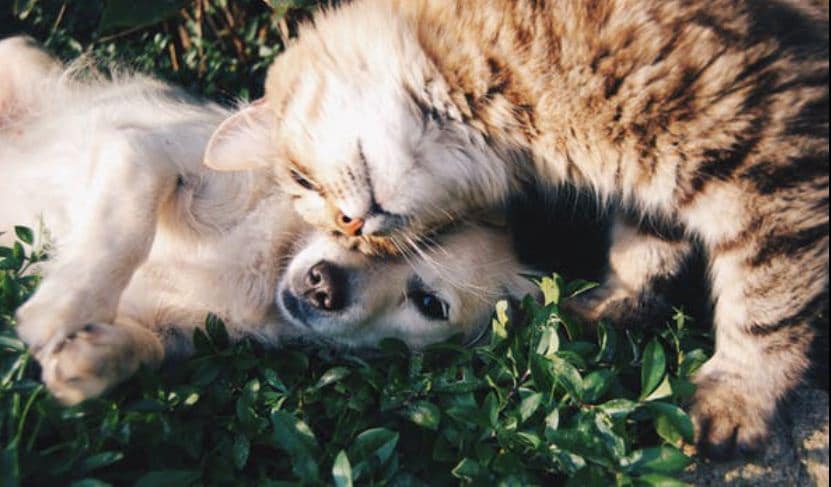
Busting the Myth: Can My Pet Get Lice?
December 23, 2017
So you have head lice and now you have to go through the whole process of cleaning the house, washing your clothes and bed sheets.
You’ve planned to visit the local lice clinic and you know you’ll be rid of this annoyance soon. But then you notice your pet scratching that itch on their back and you realize… does my pet have lice?
Can my pet have lice?
To put it simply;
Pets don’t get lice.
Sure, your dog might get fleas but lice are specific to different species, meaning that each animal species has a different species of lice.
Lice that infest human hair need human blood for survival. So if you or someone in your family ends up getting lice, your pet will be quite safe from a lice outbreak and nits. Vice versa, if a pet gets lice, that specific species will not be able to live on human blood.
Lice in Common Household Pets
Cats and dogs do get lice, but it’s not a common parasite for household pets. Often found in animals that live in poor sanitary conditions, have poor overall health and poor diet, lice are also found in pets that are very young or senior.
Dogs are affected by two kinds of lice; namely the Linognathussetosusand Trichodectescanis. Cats are affected by only one type of lice, Felicolasubrostata.
Lice amongst pets fall in two categories— chewing and blood sucking. Lice that chew live on a pet’s dead skin, and cause irritation which can lead your pet to scratch. If your pet scratches itself, it’s important that you take it to the vet straightaway, since the chewing lice carry diseases and can transmit tapeworms. Lice that suck blood would do just that – suck blood. As in the case with humans, the blood sucking would cause itchiness and force pets to bite themselves. Left untreated, this can cause loss of fur.
Lice in Humans
Lice in humans are not a threat to health, neither are they an indicator for poor personal hygiene. Lice are a cosmetic inconvenience that’s very annoying so it’s best to see a lice removal expert so they can treat your lice accordingly. Stay away from prescription medication and over-the-counter products otherwise the ingredients in both could lead to an allergic reaction.
Come to Lice Busters USA in Miami
The best and fastest way to get rid of lice is by going to a lice removal clinic that offers natural, all-safe treatments.
Contact Lice Busters USA if you’re in need of treatment and book an appointment by calling (800) 405-8201!



